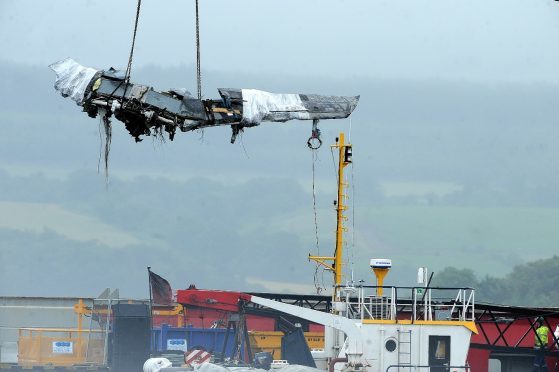Fears have been raised that anti-crash systems due to be fitted to fast jets at RAF Lossiemouth are “inadequate”.
Moray MP Douglas Ross has flagged concerns about the technology being rolled out across the RAF’s Typhoon fleet next year.
He claims the system being put in place will not provide information on the positioning of other aircraft in the sky at the same time, and might not be useful for certain types of mission.
And he was backed by retired RAF engineering officer, Jimmy Jones, who argued that the approach being taken by the Ministry of Defence (MoD) risked a repeat of the mid-air collision over the Moray Firth in 2012 in which three airmen were killed.
But last night, the MoD insisted that the jets will have “multiple aids to assist with safety” and that a “multi-layered” approach to avoiding collisions was taken at all times.
Mr Ross said: “With Typhoon aircraft deployed at RAF Lossiemouth I want assurances that our pilots are as safe as they can possibly be.
“There are concerns that the awareness system proposed does not provide pilots with aircraft-to-aircraft spatial positioning and avoidance information, and cannot be guaranteed to be serviceable for all missions.”
Calls for improved anti-crash technology have been made since two Tornado jets crashed over the Moray Firth on July 3, 2012.
RAF Lossiemouth Squadron Leader Sam Bailey, Flight Lieutenant Hywel Poole and Flight Lieutenant Adam Sanders were all killed when the two GR4 jets crashed into one another seven nautical miles south-east of Helmsdale.
Squadron Leader Paul Evans suffered serious injuries.
Mr Jones accused the MoD of continuing to take a “cavalier approach” towards the risk of airborne collisions, despite the findings of an inquiry into the tragedy.
He said: “The improved situation awareness being offered to Typhoon pilots does not reduce the risk to the required level of ‘as low as reasonably practicable’, and does nothing to minimise the risk to the general public.
“History is repeating itself.”
An MoD spokesman last night said the enhanced collision awareness system being installed will provide “an additional layer of protection”.
He added: “RAF aircrew training is the best in the world and they have multiple aids to assist with flight safety.
“We incorporate a multi-layered approach to avoid collisions.”
